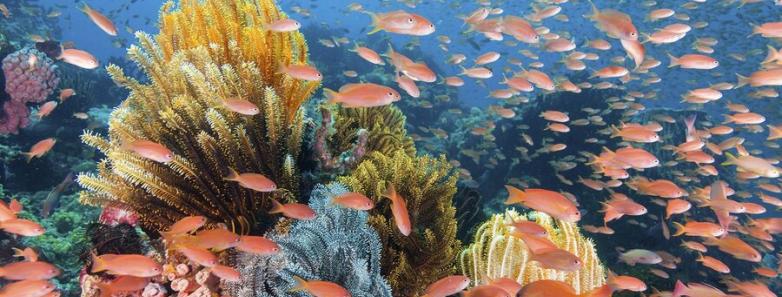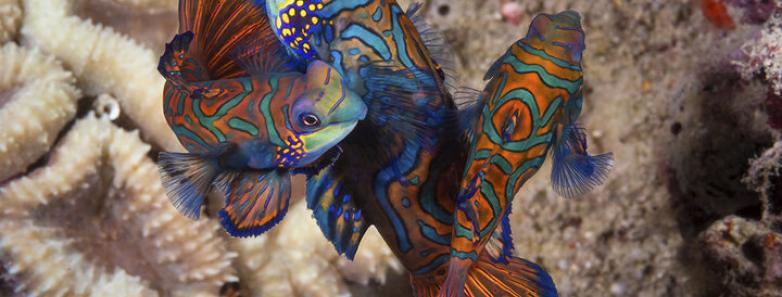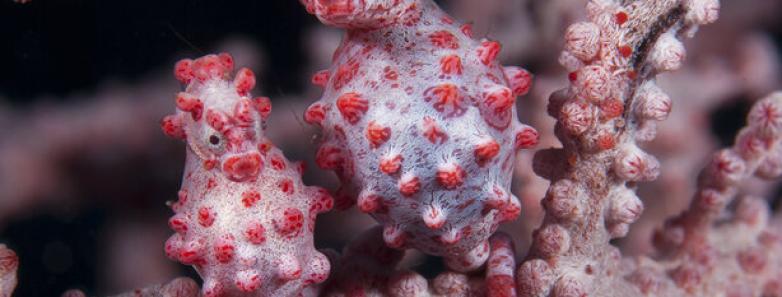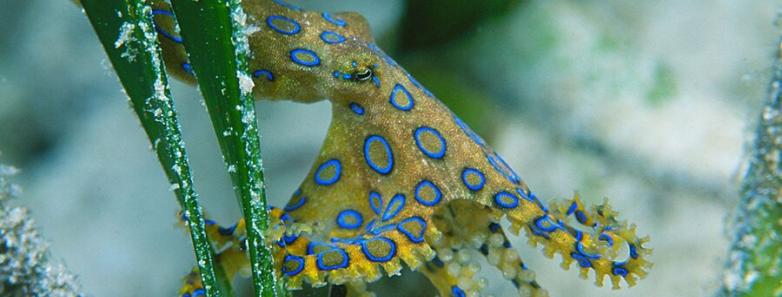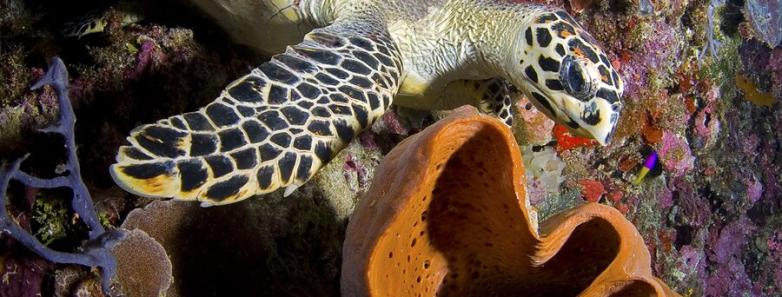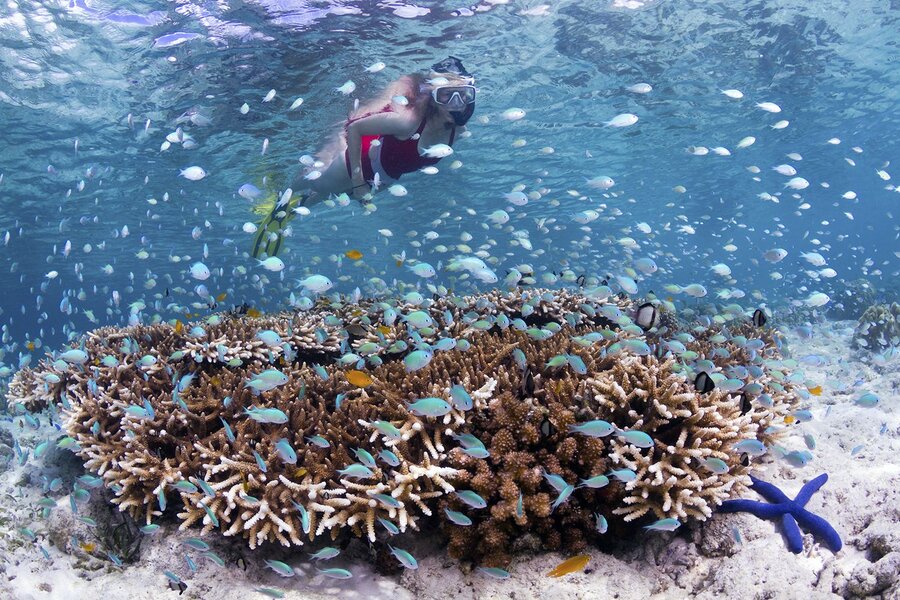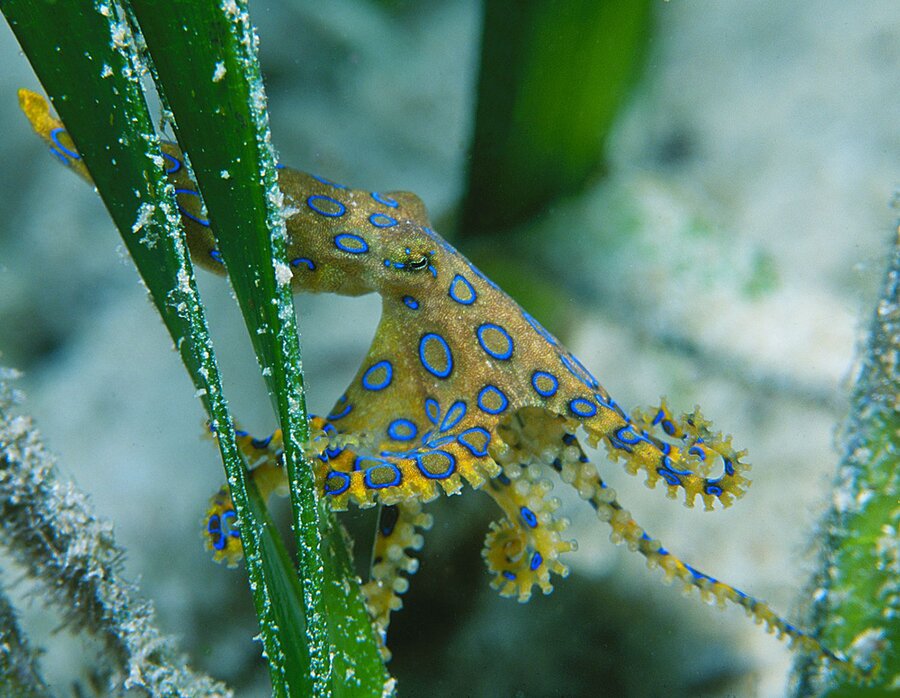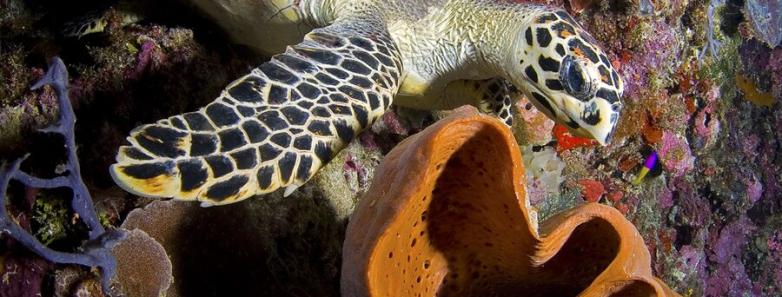Scuba Diving Wakatobi National Park, Indonesia
Wakatobi Diving Highlights
Wakatobi National Park, Indonesia is an off the beaten path dive destination with world-class dive sites. Wakatobi diving includes the largest barrier reef in Indonesia and some of the most pristine reefs and wall diving in the world. Wakatobi National Park consists of over 100 islands and is named for the four largest: Wangi-Wangi, Kaledupa, Tomia, and Binongko.
Wakatobi is a highly protected area that encompasses some of the world's highest coral reef biodiversity. Expect a wide variety of coral formations, unique underwater topography, and rich fish and critter life while diving Wakatobi's extremely healthy reefs.
Jump to:
Marine Life & Environment - Best Dive Sites - Diving Conditions
How to Get There - How to Dive Wakatobi - Best Time to Dive
Where is Wakatobi?
Declared a national park in 1996, the Wakatobi Islands, officially known as Tukang Besi Archipelago, can be found in the Southeast Sulawesi province in Indonesia.
Bali (DPS) is the gateway for reaching Wakatobi.
Intro to diving Wakatobi National park
Scuba diving in Wakatobi Natoinal Park is renowned for the incredible marine biodiversity, including over 900 fish species and over 700 coral reef species. Wakatobi National Park is made up of more than 100 islands and is named for its four larger islands: Wangi-Wangi, Kaledupa, Tomia and Binongko. Diving Wakatobi National Park is a magical experience with crystal clear waters, different types of reef groups like the atolls, barrier, or fringing reefs and you can even see mangrove forests. Divers can find both large and small marine life here.
Wakatobi dive resorts & liveaboards
Scuba diving Wakatobi National Park can be explored from a dive resort or a liveaboard. There are a few Wakatobi dive resorts available and plenty of liveaboard choices, which is why most divers choose to dive Wakatobi by liveaboard. As a remote area, a dive liveaboard will also give you the chance to see more of the region.
Images care of the Wakatobi Dive Resort
Diving Information
Marine Life in Wakatobi
While diving in Wakatobi, you can expect to see beautiful vistas, pristine coral reefs, abundant colorful reef fish, and rare and unusual cryptic "critters". New species are still being discovered in this region! Reef scenery and marine life abundance/diversity are the two key points when scuba diving Wakatobi. Since the entire area has been turned into a sustainable protected marine park, marine life has increased to even greater numbers than before!
Learn more about the best diving in Indonesia here.
wakatobi Diving Conditions
- Water Temperatures: 79-86°F(26-30°C)
- Visibility: 66-197 ft (20-60m)
- Skill Level: Beginner to Advance
Images care of the Wakatobi Dive Resort
Best Dive Sites in Wakatobi
Here are some of the Wakatobi's best dive spots. Pick a dive site or read the entire list:
- 1. House Reef
- 2. Cornucopia
- 3. Coral Garden
- 4. Roma
- 5. Teluk Maya
- 1. House Reef - A great variety of fishes, tunicates, whips, sponges, overhangs beautiful pristine corals and anemones housing shrimps, crabs and nudibranchs. Suitable for intermediate to advanced divers.
- 2. Cornucopia - Varied topography with walls, ledges and overhangs. Marine life includes huge fans, sponges, beautiful hard & soft corals. Suitable for advanced divers.
- 3. Coral Garden - Provides a nice dive surrounded by colorful coral reefs, trevally, snapper, moray eels, sea snakes, turtles and rays. Suitable for all levels of divers.
- 4. Roma - An elegant coral garden with nudibranchs, pyramid butterfly fish, sergeant majors, snappers, redtooth triggerfish, banded sea snakes, rabbitfish, and turtles. Suitable for beginner divers.
- 5. Teluk Maya - Easily accessible from the Wakatobi Dive Resort, this dive site offers great diversity. Walls with overhangs, coral formations at shallow depths and patches of seagrass. Teluk Maya has also amazing macro life and rare species.
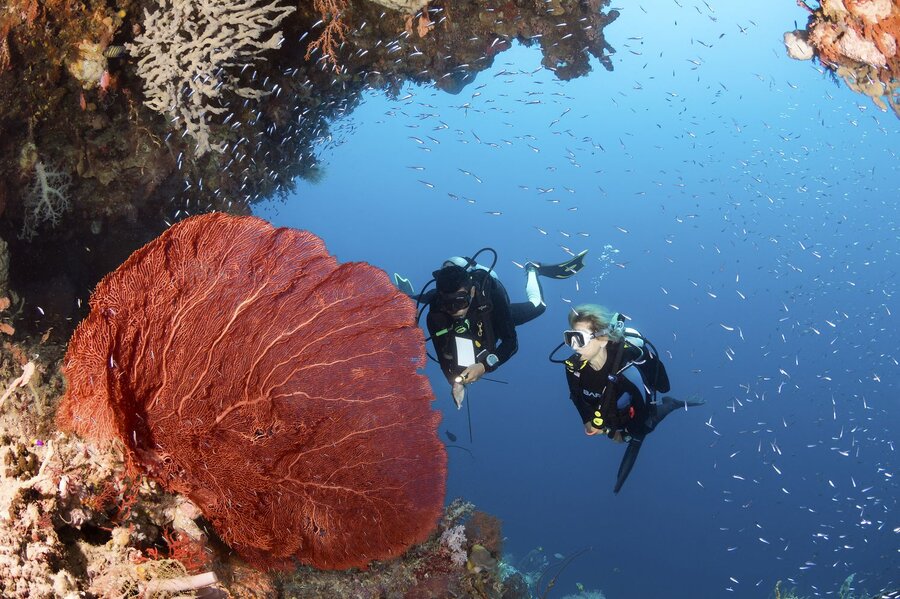
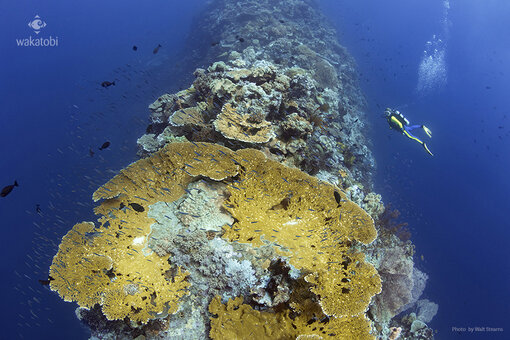
- Images care of the Wakatobi Dive Resort
Travel Information
How to Get There
Denpasar International Airport in Bali (DPS) is the best international gateway to Wakatobi National Park, and you'll need a connecting domestic flight to reach Wakatobi. If you have time, stay a few days and enjoy some excellent Bali diving and the island's rich culture.
How to Dive Wakatobi
Wakatobi Dive Resort is the most popular land-based option for scuba diving in Wakatobi.
Join a Wakatobi liveaboard to explore more of Wakatobi's wonderful underwater world. With a liveaboard, you can visit the remote areas that are not easily accessible from a resort. Pelagian is the only liveaboard to date that dives exclusively in Wakatobi.
There are also other liveaboard options in Wakatobi that offer routes in combination with other diving regions in Indonesia, notably Sulawesi, Halmahera and some parts of Raja Ampat. Check out our range of multi-region trips and Indonesian liveaboards.
For another great liveaboard destination offering phenomenal biodiversity, check out our guide to diving Tubbataha Reef.
Best Time to Dive Wakatobi
Wakatobi is one of the more arid regions of Indonesia, and it is diveable year-round. However, there is a higher risk of rain in December-February, so we recommend diving Wakatobi in March-November. March-May and September-November are the peak season months for Wakatobi scuba diving.
Topside & Non-Diving Activities
Due to its remote location, diving and snorkeling are the most popular activities in Wakatobi. That being said, resorts offer additional facilities for any non-divers, including spa treatments, relaxing hammocks and extra "pampering" throughout your stay.
Wakatobi Liveaboards
Find a liveaboard trip to Wakatobi and the surrounding regions.
The rates shown below are per person in USD. Some of the operators quote in other currencies and the pricing at the time of booking may vary depending on the latest exchange rates.
Search results include trips to Wakatobi and surrounding dive regions in Sulawesi.
Please contact us for the latest availability of Pelagian & Velocean.
Other Useful Information
Practical Information
- Currency: Indonesian Rupiah (IDR)
- Main Airport Code: WNI
- Electricity: generally is 220 volts, with 2 round pin plugs (European Standard)
- Vaccines: None are essential for US visitors. It is recommended that you are up to date with Typhoid, Tetanus/Diphtheria, Hepatitis and Polio for any trip to the tropics.
- Visa: A 30-day Visa on Arrival (VOA) can be purchased upon arrival in Indonesia. Make sure your passport has a blank page, and is valid for 6 months.
- Language: Bahasa Indonesia is the official language of Indonesia.
GOT QUESTIONS? READY TO BOOK?
Call us today at +1-310-915-6677 or email us info@bluewaterdivetravel.com
And let us book your dream vacation!

